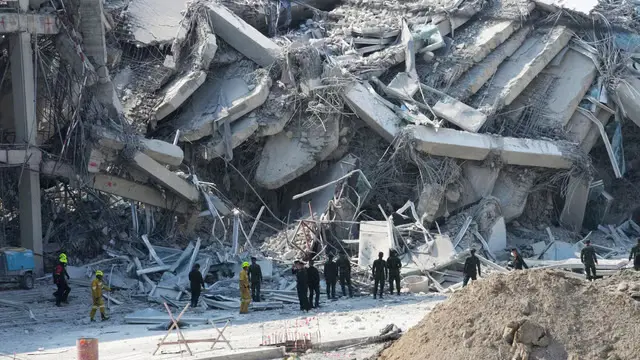Introduction
Thailand recently experienced a powerful earthquake, shaking major cities and causing widespread panic. Reports indicate structural damage in Bangkok, with a building collapse adding to the destruction. As rescue teams work tirelessly, concerns over casualties and aftershocks persist. This article covers the earthquake’s impact, safety measures, and Thailand’s preparedness for seismic events.
The Earthquake’s Impact on Thailand
The recent earthquake, originating near the Myanmar border, sent tremors across Thailand, particularly affecting Bangkok. The tremor caused buildings to sway, roads to crack, and residents to evacuate in fear.
- Bangkok Building Collapse: A skyscraper under construction in the capital suffered severe damage, partially collapsing. Emergency teams rushed to the site to assess casualties and rescue trapped individuals.
- Infrastructure Damage: Roads, bridges, and older structures reported visible cracks, raising safety concerns for residents.
- Tsunami Risks: Though no tsunami warnings were issued, coastal communities remained on high alert.
Rescue Efforts After the Thailand Earthquake
Rescue teams swiftly responded to distress calls, searching for survivors in collapsed structures. Emergency response measures included:
- Immediate Evacuations: Residents in high-rise buildings were evacuated to open spaces.
- Medical Aid: Hospitals received a surge in injured victims, primarily suffering from falling debris and panic-related injuries.
- Search & Rescue Missions: Specialized units, including firefighters and military personnel, combed through rubble to locate survivors.
International organizations and neighboring countries also offered assistance, sending rescue teams and aid supplies.
Earthquake Safety Tips: What to Do Before, During & After
Before an Earthquake:
- Identify safe spots in your home (under sturdy tables or next to interior walls).
- Secure heavy furniture and objects that could fall.
- Prepare an emergency kit with food, water, and medical supplies.
- Stay informed about Thailand’s earthquake preparedness guidelines.
During an Earthquake:
- Indoors: Drop, cover, and hold on. Stay away from windows and heavy furniture.
- Outdoors: Move to an open space, avoiding buildings, trees, and power lines.
- Driving: Stop safely and remain inside the vehicle until shaking stops.
After an Earthquake:
- Check for injuries and assist those in need.
- Inspect your surroundings for hazards like gas leaks and damaged structures.
- Follow official instructions regarding evacuations and aftershock warnings.
How Thailand Can Improve Earthquake Preparedness
While Thailand is not as seismically active as neighboring countries, earthquakes can still pose a significant threat. Future preparedness efforts should focus on:
- Strengthening Building Codes: Enforcing stricter construction standards to prevent collapses.
- Improving Early Warning Systems: Enhancing real-time seismic alerts for faster response.
- Public Education Campaigns: Teaching residents how to stay safe during earthquakes.
Conclusion
The Thailand earthquake serves as a reminder of the importance of preparedness. With proper safety measures, awareness, and improved infrastructure, the impact of future earthquakes can be minimized. Stay informed, stay prepared, and prioritize safety to protect yourself and your loved ones.


